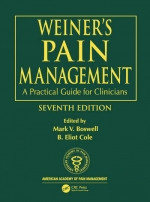Tab Article
This seventh edition of a bestseller has been totally revised and updated, making this the most comprehensive rewrite in the book's long and distinguished history. It includes new chapters, new sections and section editors, and new contributors. Offering an interdisciplinary approach to pain management, the book delivers a scholarly presentation for those concerned with pedagogy, while still being accessible to those concerned with the immediate application of techniques.
Here's what you get in the Seventh Edition:
- Tighter focus on discipline-specific approaches
- Expanded coverage of electrical and magnetic therapies
- New information on behavioral approaches
- Diagnostic tests and evaluations
- Updated information on legal and ethical issues


